Uzbekistan is most well-known for its iconic Islamic architectural wonders such as the Registan in Samarkand, the Kalyan Minaret in Bukhara, and the ancient city of Khiva. However, its food culture is not as widely recognized.
PLOV
In Uzbekistan, the staple dish is called plov or osh, which is a rice dish with bits of meat, carrots, onions, and sometimes even roasted garlic and hard-boiled eggs added to it. It’s typically served for lunch and afterwards, and is a staple at big celebrations like weddings where large quantities of it are cooked by male chefs known as oshpaz, in large pots called kazans.
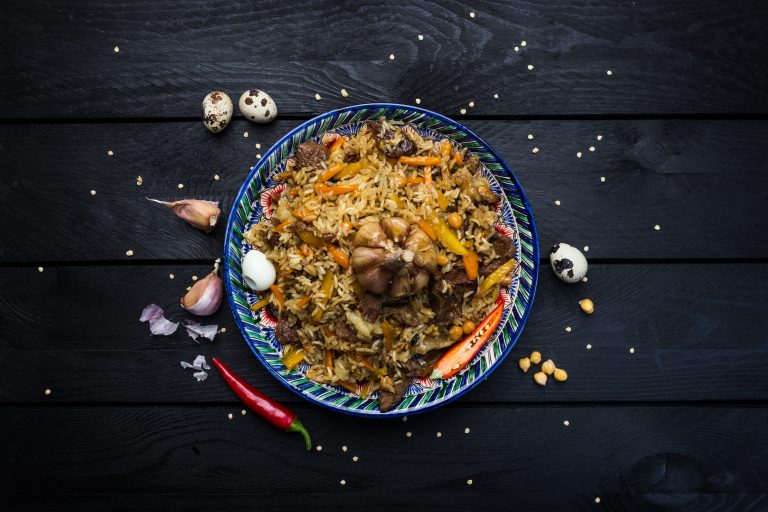
Uzbekistan enters record books with world’s biggest plov
The largest serving of plov weighs 7,360 kg (16,226 lb 0 oz) created by Milliy TV (Uzbekistan) in Tashkent, Uzbekistan, on 8 September 2017.
Hugely popular across Central Asia, plov is nothing less than a national obsession in Uzbekistan. Last week, Uzbek chefs produced a portion of the rice-based dish so big that it entered the Guinness Book of World Records.
After an impressive trial run in August, which saw a team of 50 top chefs create a portion weighing more than six tonnes in a veritable plov fest, the chefs outdid even themselves on 8 September.
Far exceeding the 4 tonnes required to beat the official record, the team of distinguished cooks from across Uzbekistan managed to prepare 7,360 kg of plov at Tashkent’s O’zbegim festival, under the watchful eye of Guinness Book of World Records official Richard Stenning. 1,500 kg of meat, 1,900 kg of rice, 2,700 kg of carrots, 220 kg of onions and 440 litres of vegetable oil were used in the preparation of the mammoth dish.

SHURPA
Shurpa (also spelled shorwa, shorpo) is a rich and thick soup that will help you enhance your physical power and regain strength if you have lost it, ranks among the foremost first-course dishes of the Uzbek cuisine. There are two main types of this dish – kaynatma shurpa and kovurma shurpa, which differ mainly in the way of their preparation; however, there actually is a great variety of recipes of cooking shurpa, as each region of Uzbekistan prides itself upon its own specificities and secrets.
Kaynatma shurpa (Uzbek ‘kaynatmok’ – ‘to boil’) is a diet dish consisting of only meat broth and boiled vegetables. Kaynatma shurpa will appeal to people from northern countries, where the base of the soup is almost never fried.
Kovurma shurpa (Uzbek ‘kovurmok’ – ‘to fry’) requires the same ingredients, but is cooked in a cauldron, as the meat should first be fried together with onion and carrot. Then water is added, and after the meat is ready, vegetables are put too.
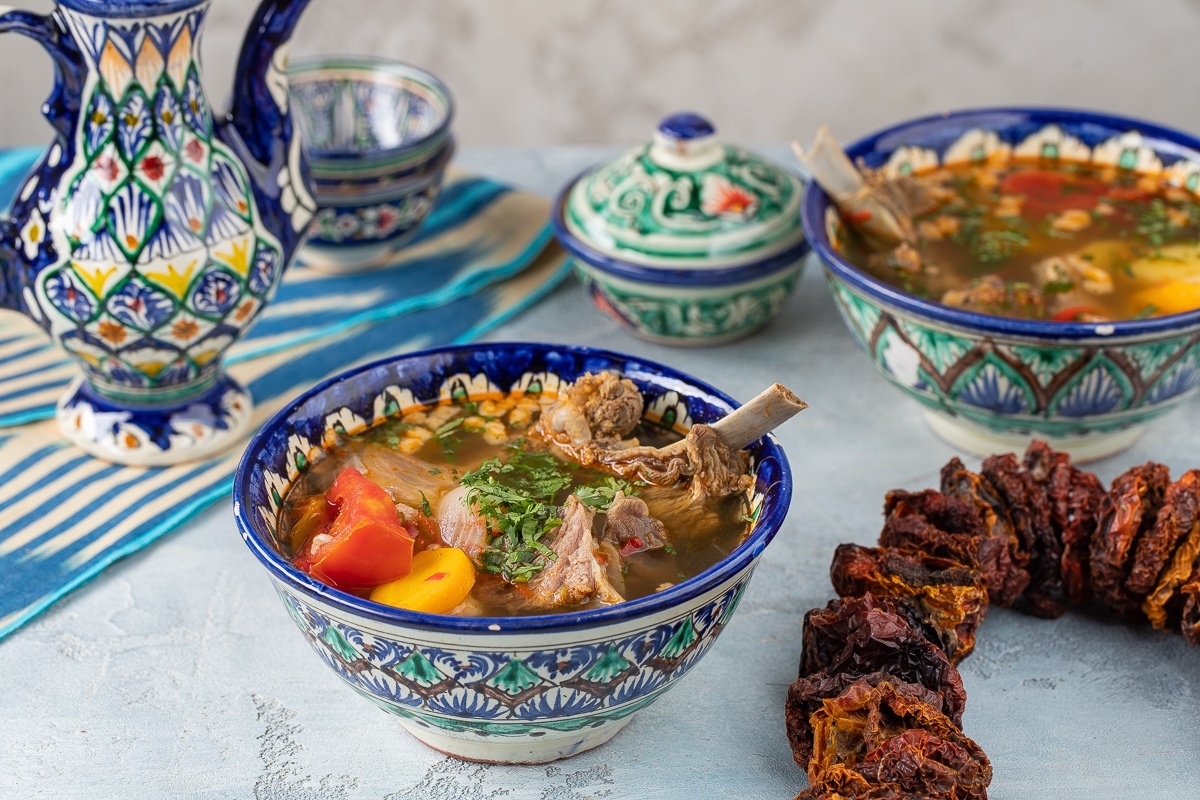
There is a variation of shurpa, called mokhara shurpa, which is made with chickpeas (nokhat). The chickpeas used are a large variety from Central Asia that retain their firm texture even after being boiled for a long time. To prepare the dish, the chickpeas should be soaked in cold water before being boiled with meat.
DIMLAMA
Dimlama is a popular and nutritious dish in Uzbek cuisine, consisting of a variety of vegetables and sometimes meat. It is similar to vegetable stew, with the name “dimlama” derived from the verb meaning “to stew”. The dish can also be made with just vegetables, known as “sabzy dmlama“.
Dimlama is primarily prepared during the summer and fall when there is an abundance of vegetables, and also in winter but with a limited selection of juicy ingredients.
Dimlama is known for its unique flavor that comes from cooking over an open fire or at the hearth. The taste of vegetables cooked in their own juices and the smoky aroma make this dish a culinary delight.
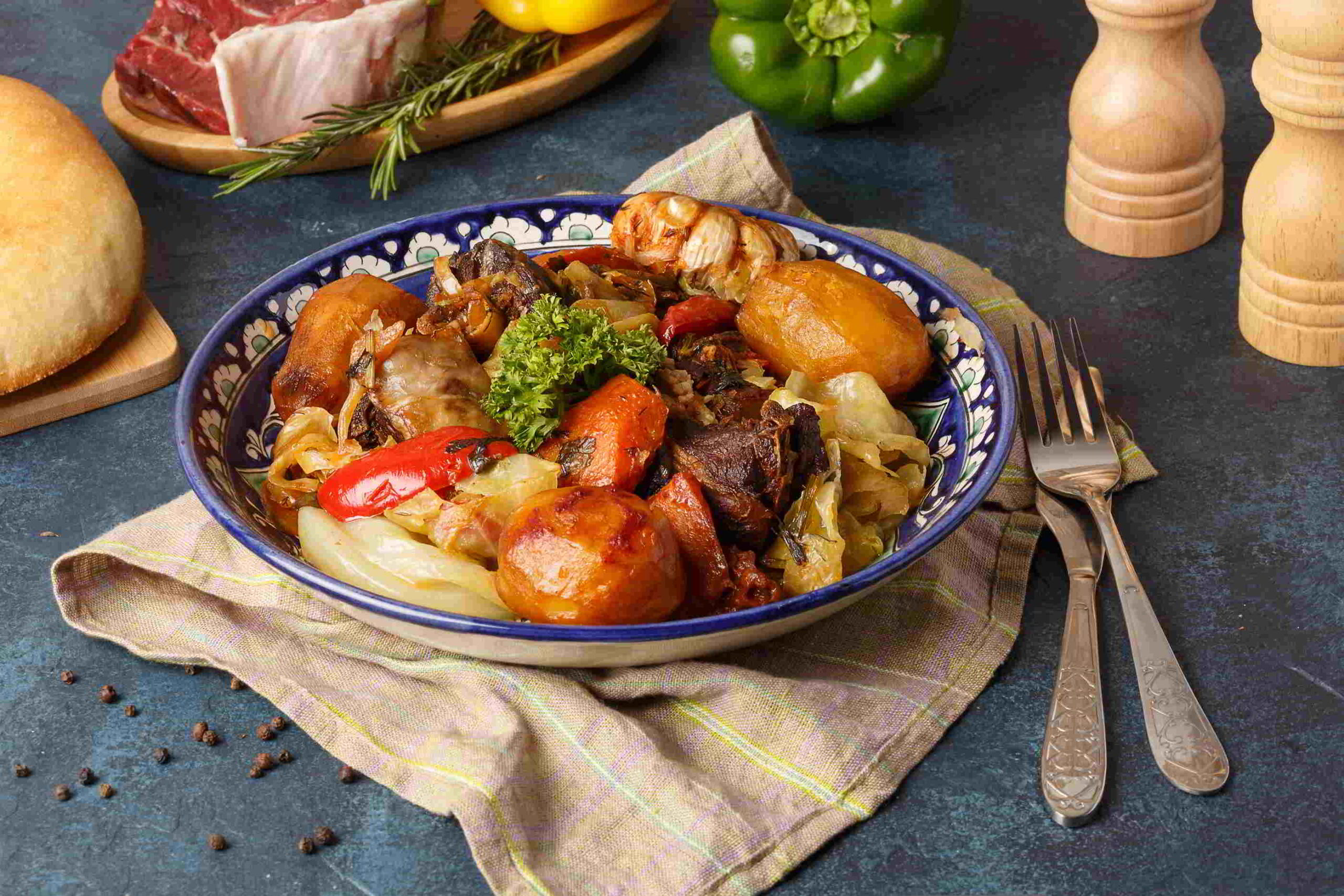
To make dimlama even more delicious, it is recommended to top it off with fresh herbs that not only add aesthetic appeal, but also enhance its taste. Additionally, sprinkle it with aromatic black pepper to bring out the flavors. Enjoy this healthy and filling dish with a piece of delicious flatbread for a hearty lunch or dinner that the whole family will love. Bon appétit!
NORIN
Uzbek dish – norin. The unusual taste of lace-like noodles in combination with horsemeat (classic version) makes the dish taste fantastic.
Norin is a homemade noodle dish that includes horse meat, specifically kazy (horse meat sausage), although beef or mutton can also be used according to the recipe.

In Uzbekistan, norin is a dish that is traditionally made for special celebrations and festivals, not only to feed guests, but also to share with neighbors. This dish is particularly popular during Ramazan Hait, when it is served as part of a festive spread along with other traditional dishes such as pilaf, baursak, urama, chak-chak, and more. Norin represents peace, friendship, prosperity, and reinforces good relations between neighbors in Uzbek tradition.
SHASHLIK (KEBAB)
One cannot imagine Uzbekistan without sunny flatbread, hot pilaf and, of course, without a delicious shish kebab (kabob). Smoke that is soaked in the aroma of fried meat on the coals goes up from the barbecue, appealing for gourmets. The seller of a shish kebab does not even need to call customers with loud exclamations, the scent of shish kebab will do it itself much more efficiently. On the shashlik bistros you can find signs “Shashlik (kabob)” or “Shashlik – kebab”. Do not be afraid – this is not a name of some other shish kebab, “kabob” (“kebab”) is Uzbek for “shish kebab”.
In Uzbek food culture, shish kebab can be made from mutton, beef, chicken, or liver (gigar kabob) and can either be made with ground meat or feature large chunks of whole meat.
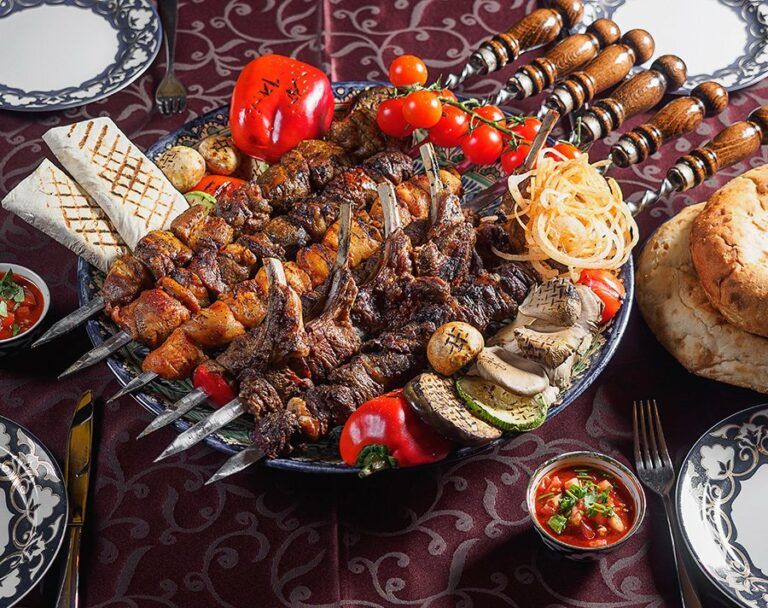
In traditional Uzbek cuisine, shish kebab is prepared on saxaul charcoal, which imparts a unique heat to the dish. However, today’s more widely used charcoal can also be used as long as it is made from wood without any strong odor, preferably not coniferous.
Before grilling meat on skewers for shish kebab, it must be marinated. There are numerous marinade recipes that can include vinegar or not, onions or not, and can use ingredients such as kiwi or pineapple.
MANTI
Manti is a dish in Uzbek cuisine that consists of large, meat-filled dumplings that are steamed in a special pot. This dish has a rich history and can be traced back to its origin in China, before spreading to Central Asia and eventually to Europe and other parts of the world. The versatility of Manti has allowed it to travel and become a beloved dish in many different cultures.
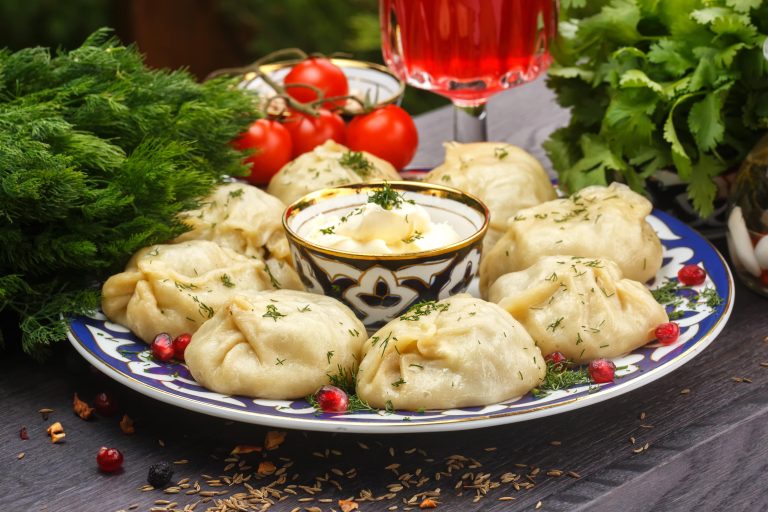
The most typical ingredients used in the common version of Manti are spiced meat (usually lamb or ground beef) and onion. However, there are variations of Manti that have fillings made of potato and onion, potato and meat, and even pumpkin. The juiciness of the Manti is dependent on the amount of onion used in the filling. Additionally, the steaming process helps to retain the maximum nutritional value of the meat and vegetables in Manti.
SAMOSA
A Samosa is a popular Uzbek dish that consists of flaky pastries filled with various ingredients, consumed both in special occasions and as a daily food. Samosas can come in different shapes and forms and can be prepared using a variety of methods.
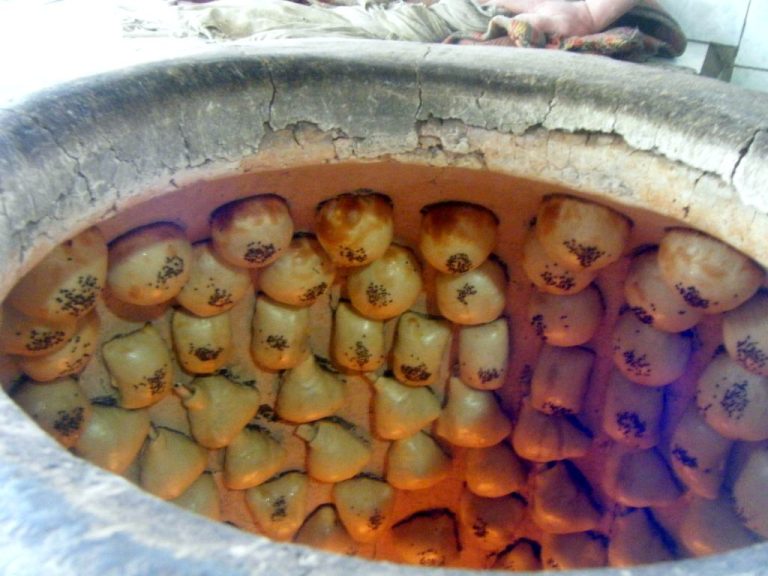
In the past, Samosas were traditionally prepared in a tandir oven, which is a type of clay oven commonly used in Central Asia. The tandir method of cooking gave the Samosas a unique taste and flavor, with fillings typically made of small pieces of meat, onion, and some sheep fat.
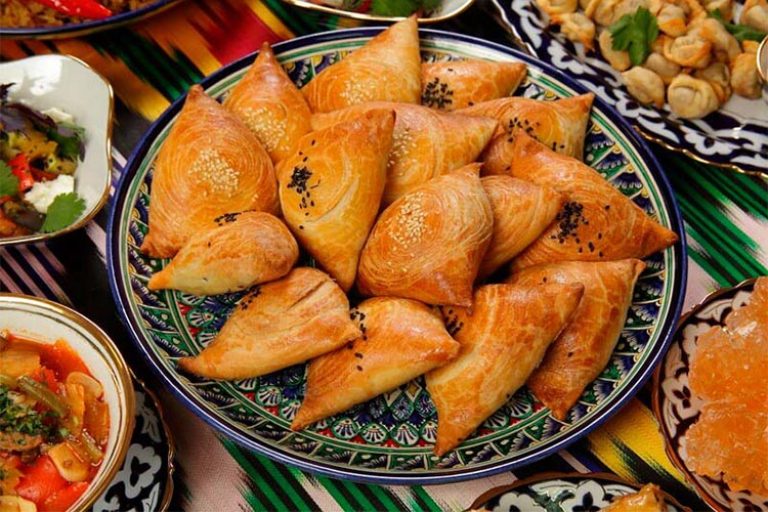
Nowadays, some sorts of samosa are cooked in gas or electric ovens, which is faster and more convenient and, at the same time, makes samosa retain its original qualities.

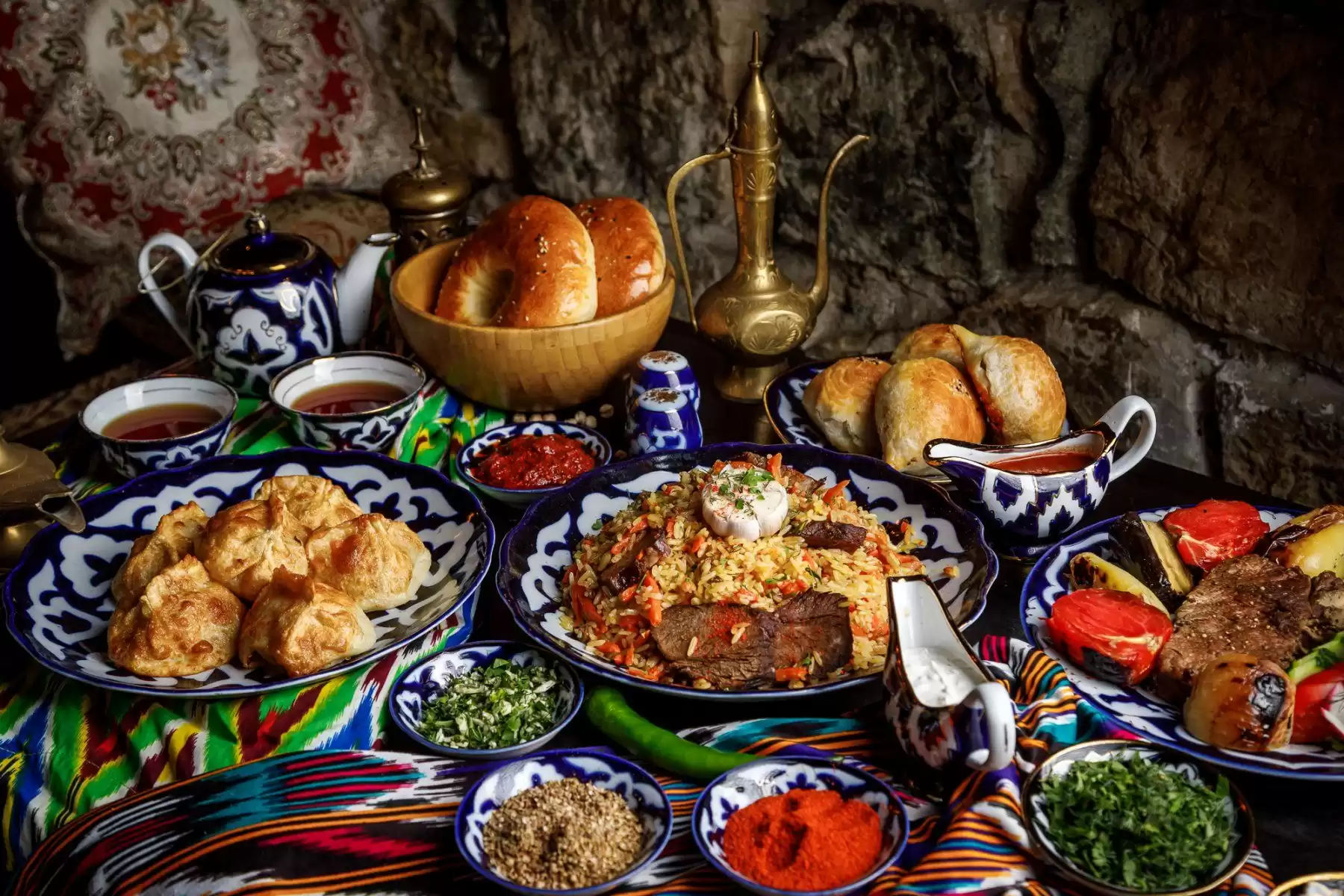
0 Comment